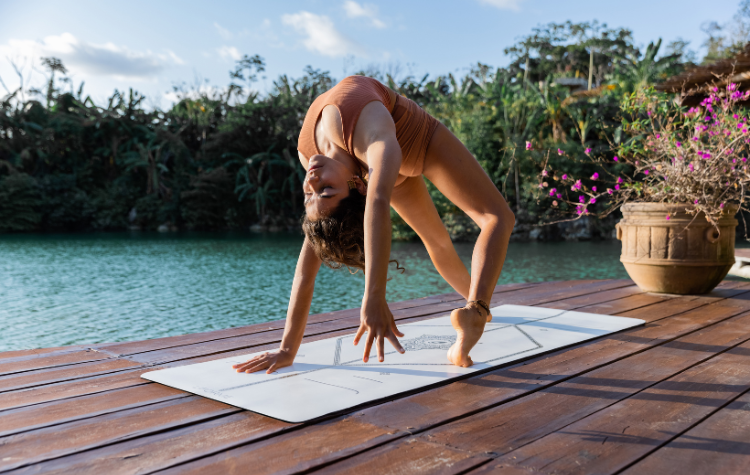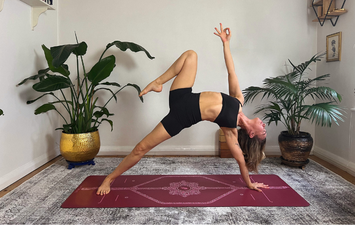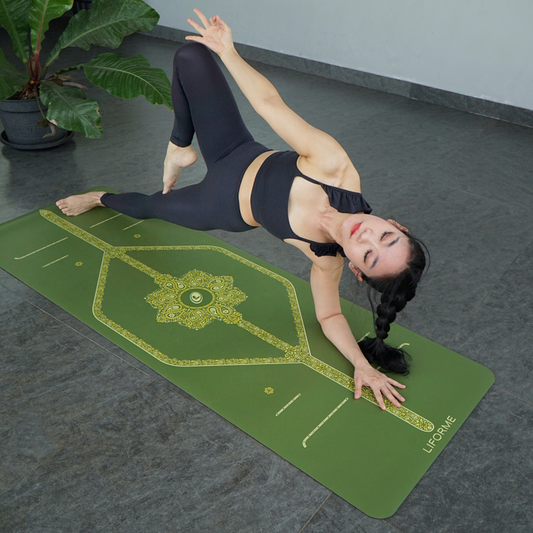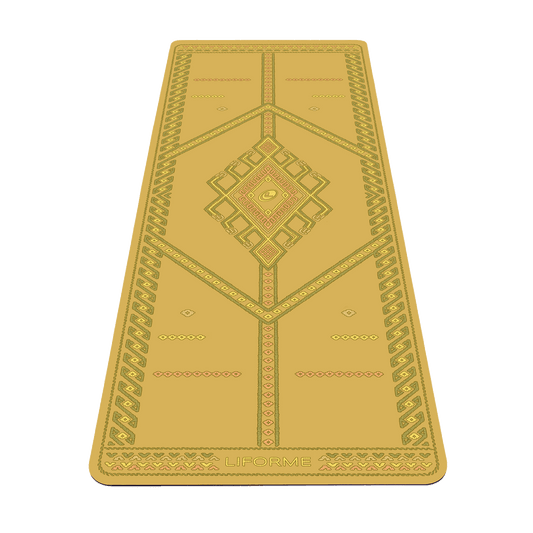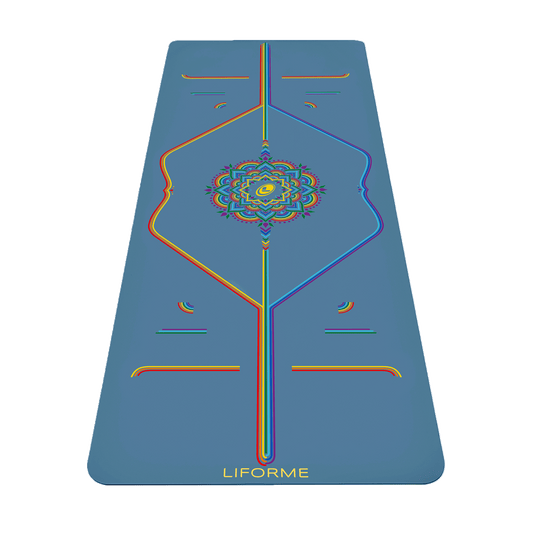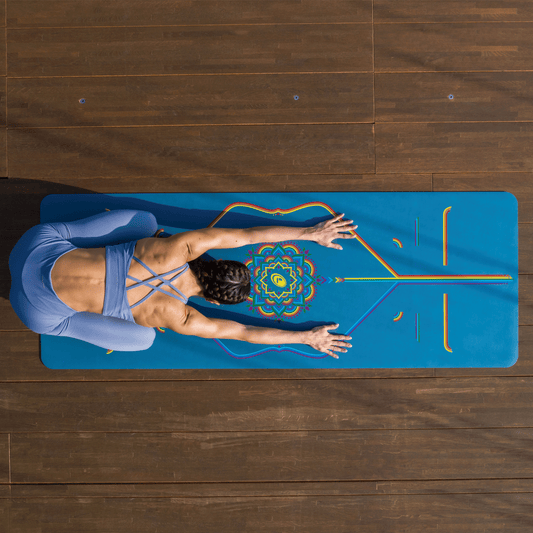When Liforme began the development process for our first yoga mats in 2008, we didn’t yet know what the ideal combination of materials to achieve our goals would be, but we quickly knew what it wouldn’t be: PVC.
PVC Problems: Performance
At the time, our objection to PVC (polyvinyl chloride) mats was largely performance based. As a closed-cell plastic polymer, PVC is, by its very nature, uniquely unsuited to yoga. Closed-cell structures do not absorb liquids, which sounds good in theory, but in practice means that sweat, whether from the palms of your hands, soles of your feet, or great torrents dripping off your forehead, stays on the surface. As soon as that happens on a yoga mat, you lose grip and start slipping all over the place. (And don’t even get us started on those bunchy mat towels!)
Improved grip was one of the primary motivations for Liforme’s inception, so we knew that PVC, though quite pervasive at the time, was not the one for us.
During our five-year quest to develop and produce the world’s best yoga mats, we learned a lot more about the downsides of PVC. Not only is it pretty bad for yoga, it’s very bad for the planet. As we all work on reducing our use of harmful plastics and the pollution they cause, it’s more important than ever for yogis to understand the problems with PVC mats and learn about more eco-friendly alternatives.

More PVC Problems: The Planet
In order for PVC to achieve the pliability required of a yoga mat, various other materials must be introduced into the mix. These include plasticisers, heat stabilisers, lubricants, and, oftentimes, cheap fillers.
Many of these additives, as well as the vinyl chloride monomer that forms the building block of PVC, are known toxins. Although the heavy metals and phthalates required to turn a hard plastic into a yoga mat are thought to be stable in their final form, the effects of regular contact with your skin have yet to be studied. In addition, the manufacturing of such products must be highly regulated to protect the workers, and this is not always the case.
The disposal of PVC yoga mats is also extremely problematic. Although PVC is plastic, it can’t just go into your recycling bin for curbside collection. In fact, even the hard type of PVC that is used for pipes isn’t accepted by most recycling facilities. This means an old PVC yoga mat is most likely to go straight into a landfill, where it can hang about for hundreds, or even thousands, of years. Once PVC does begin to degrade, the halogenated organic compounds it produces could be detrimental to the surrounding environment if they leech out of the landfill’s confines.
In places where garbage incineration is unregulated, burning the chlorine in PVC produces deadly dioxins, which can accumulate in food and can disrupt developmental, reproductive, immune, and hormonal systems in humans, as well as cause cancer, according to the WHO.

Liforme: Superior Materials for Performance and the Planet
Now that you understand the reasons to avoid PVC, you’re probably wondering how Liforme Yoga Mats are made and why it’s better.
Liforme mats are about 90% foamed non-Amazon-harvested natural rubber. Rubber is an inherently renewable resource because collecting it doesn’t harm the rubber trees. Rubber farmers have a natural economic incentive to farm their trees in a sustainable and regenerative way to ensure greater yield from the trees on their land.
The now-legendary grippy and responsive top surface of all Liforme mats is made from our completely unique and specially engineered non-toxic polyurethane (PU) material. We worked over a very long period (5 years!) to find the very best supplier and worked with some amazing scientists and chemical engineers to develop our precise proprietary formula. Whilst PU is technically a plastic, it’s very different from PVC. PU is naturally biodegradable in landfill conditions, where it breaks down benignly. Our PU is water-vapour blown, non-toxic, and biodegradable (more on this below). Our PU supplier uses the equipment and technology (unfortunately not always used by all PU manufacturers globally) to safely capture and reuse the solvents used in the production of our polyurethane. This is particularly important because if these solvents are not handled correctly, they can potentially cause harm to the environment and to humans who come into contact with them.
Another of Liforme’s amazing innovations is our patented non-absorbent barrier layer between our rubber base and PU surface. This feature, which is unique to Liforme mats, keeps moisture from the base layer while allowing it to evaporate quickly from the top layer, which keeps everything clean and grippy (which explains why we call it CleanGrip ® Technology). It also allows us to heat bond the layers, avoiding the need for toxic glues.

Better Plastics are Possible
When Liforme mats were conceived, disposal was not an afterthought or someone else’s problem. Our natural rubber and very thin layer of eco-polyurethane degrade harmlessly in normal landfill conditions in one to five years. Our thin layer of PU contains about 400 times less chlorine compared to a PVC mat.It may seem like we are splitting hairs, but these small distinctions make a big difference in the environmental impacts of man-made materials. All plastics are not created equal. When it comes to finding the balance between performance and planet-friendly materials, we’ve found the sweet spot.
Source: Evaluation of Materials for Yoga Mats, Imperial College London
Independent research commissioned by Liforme

